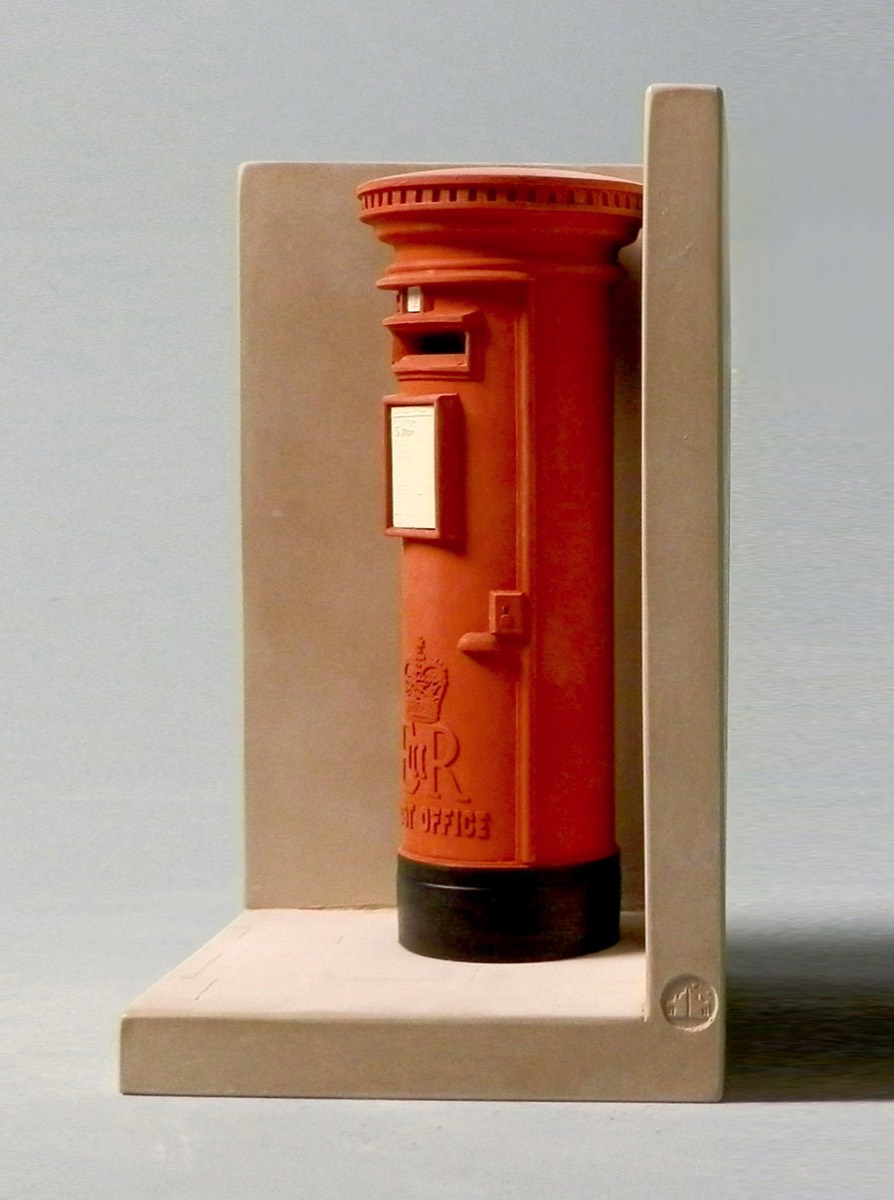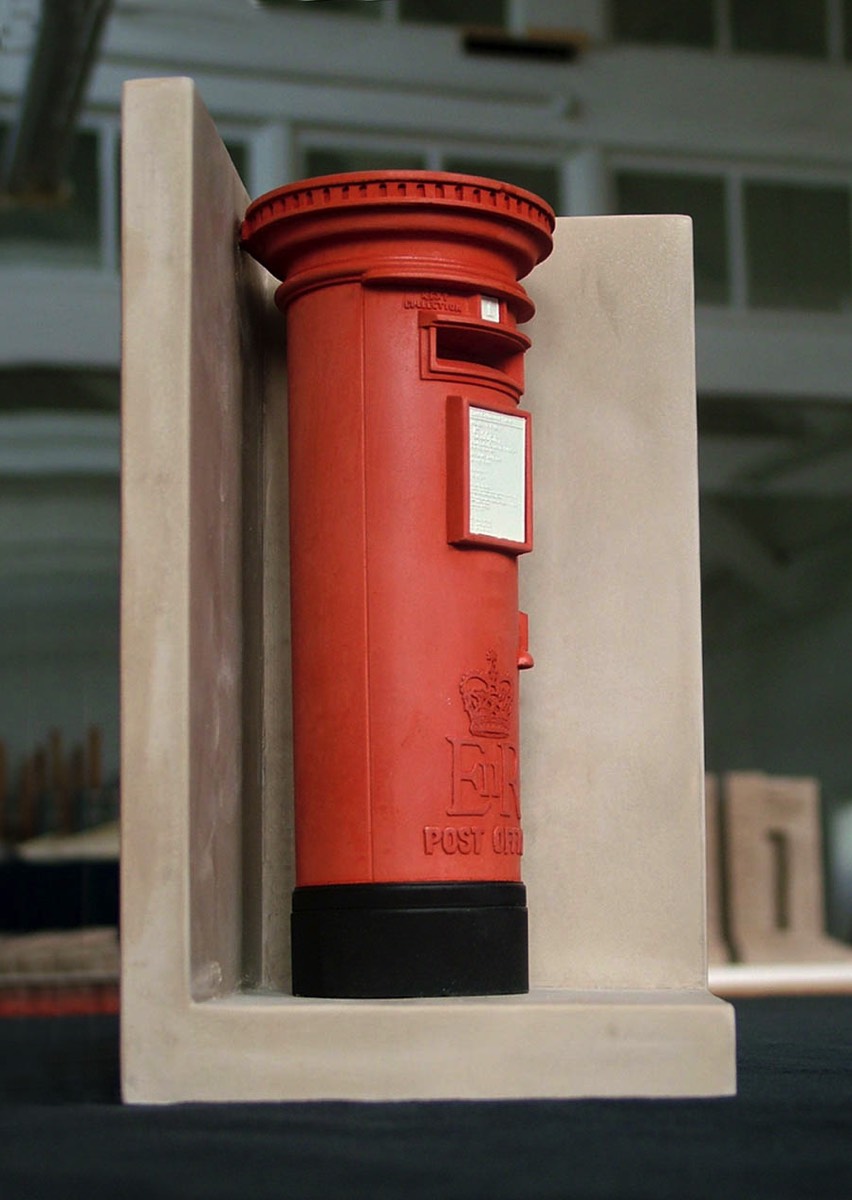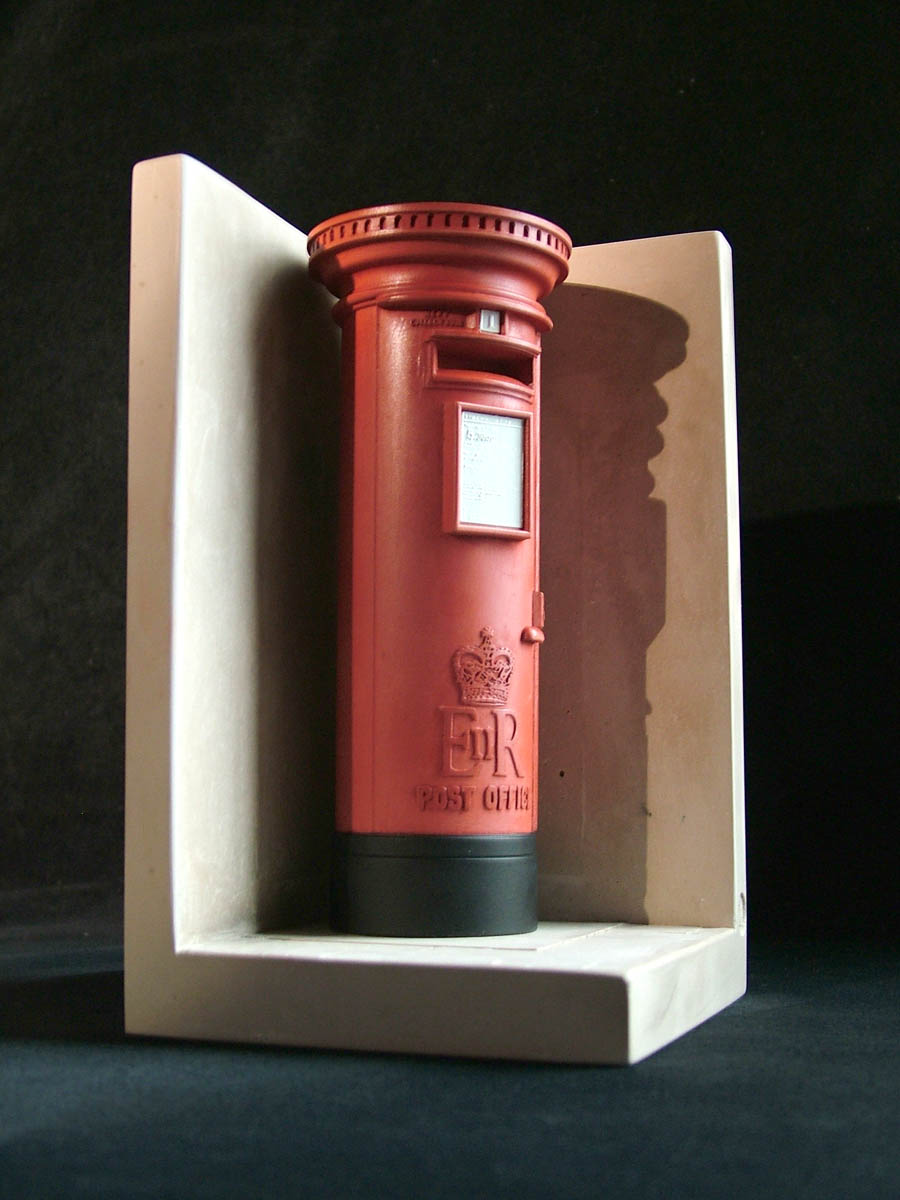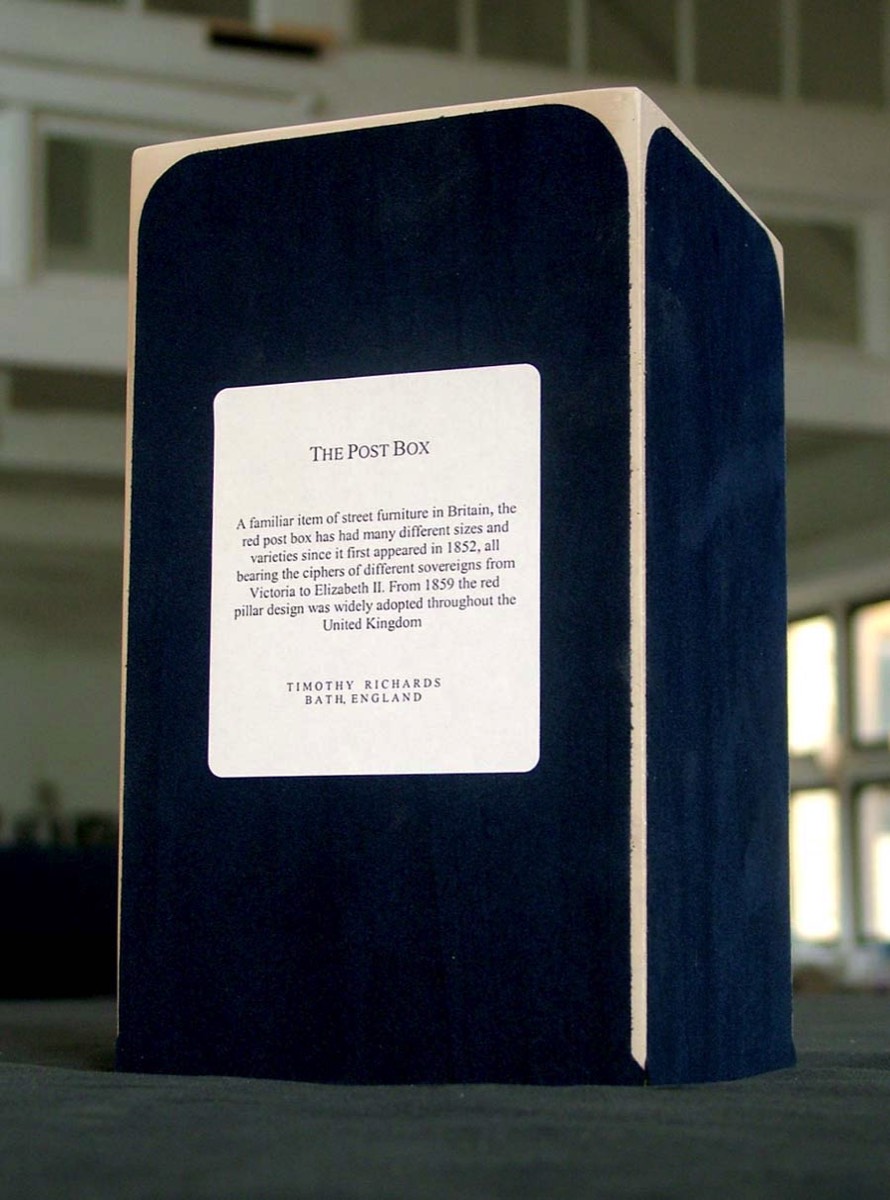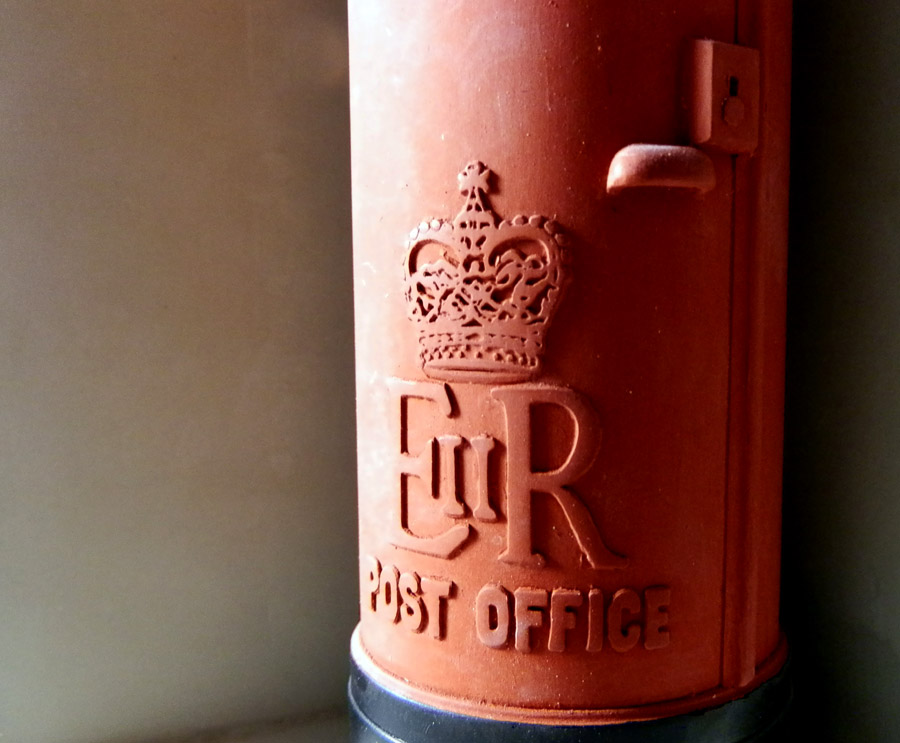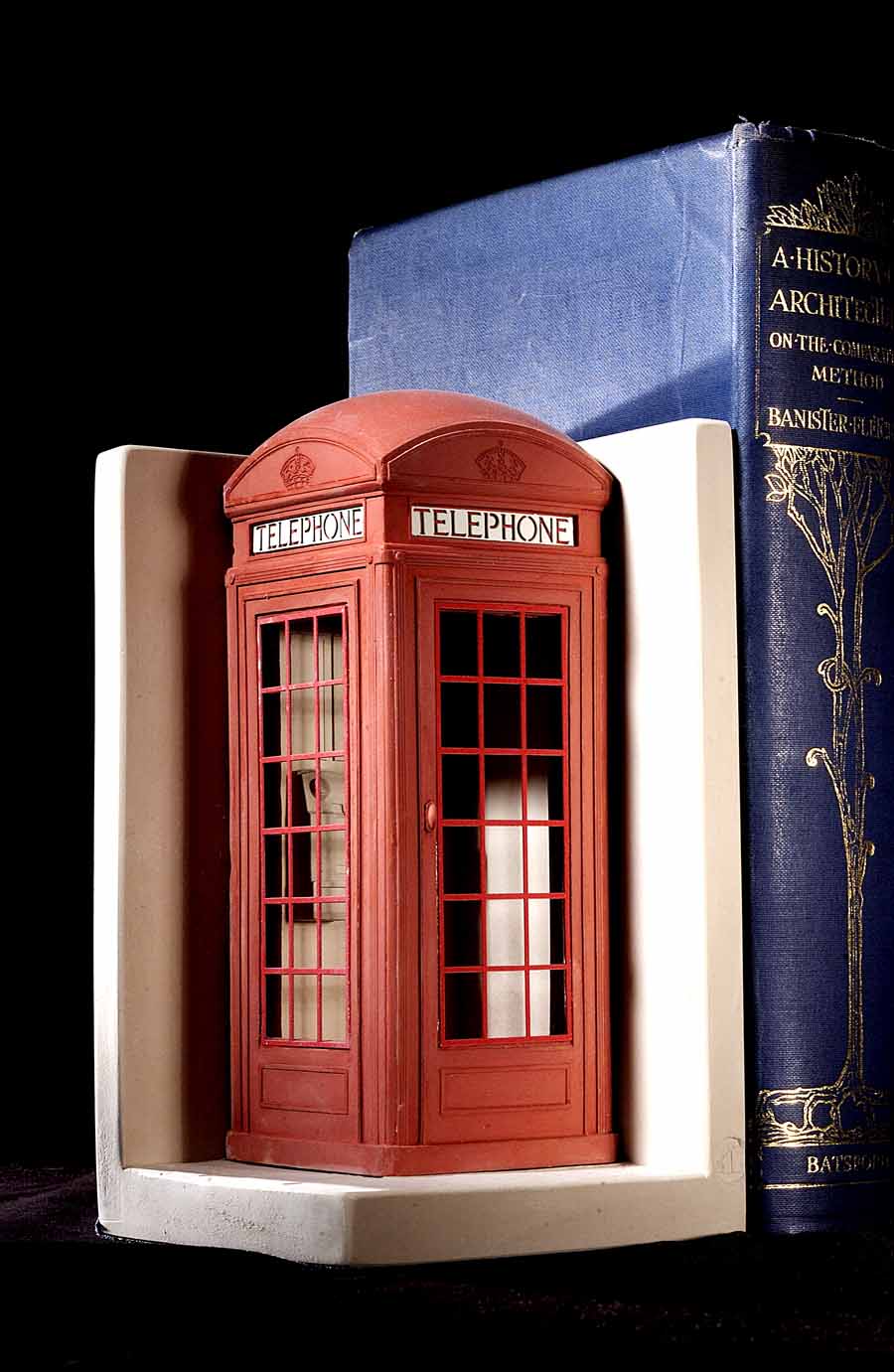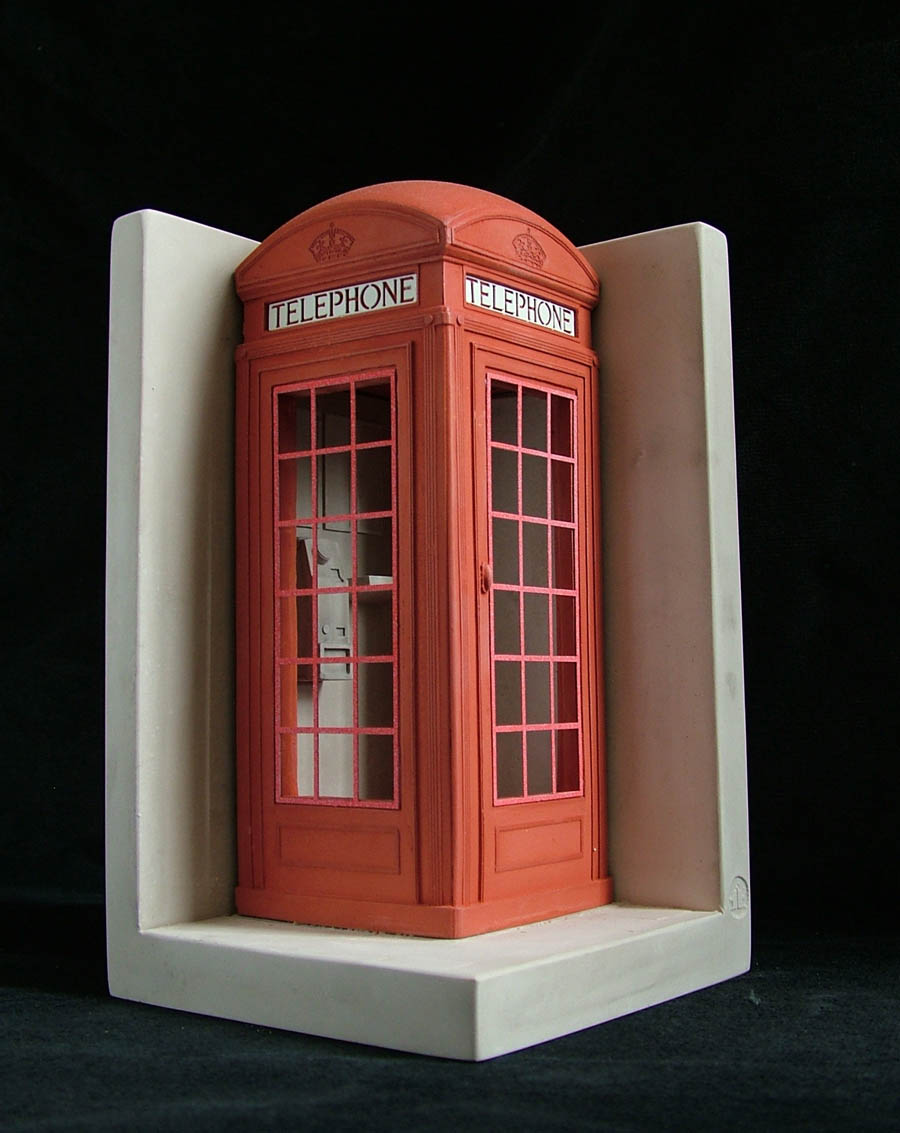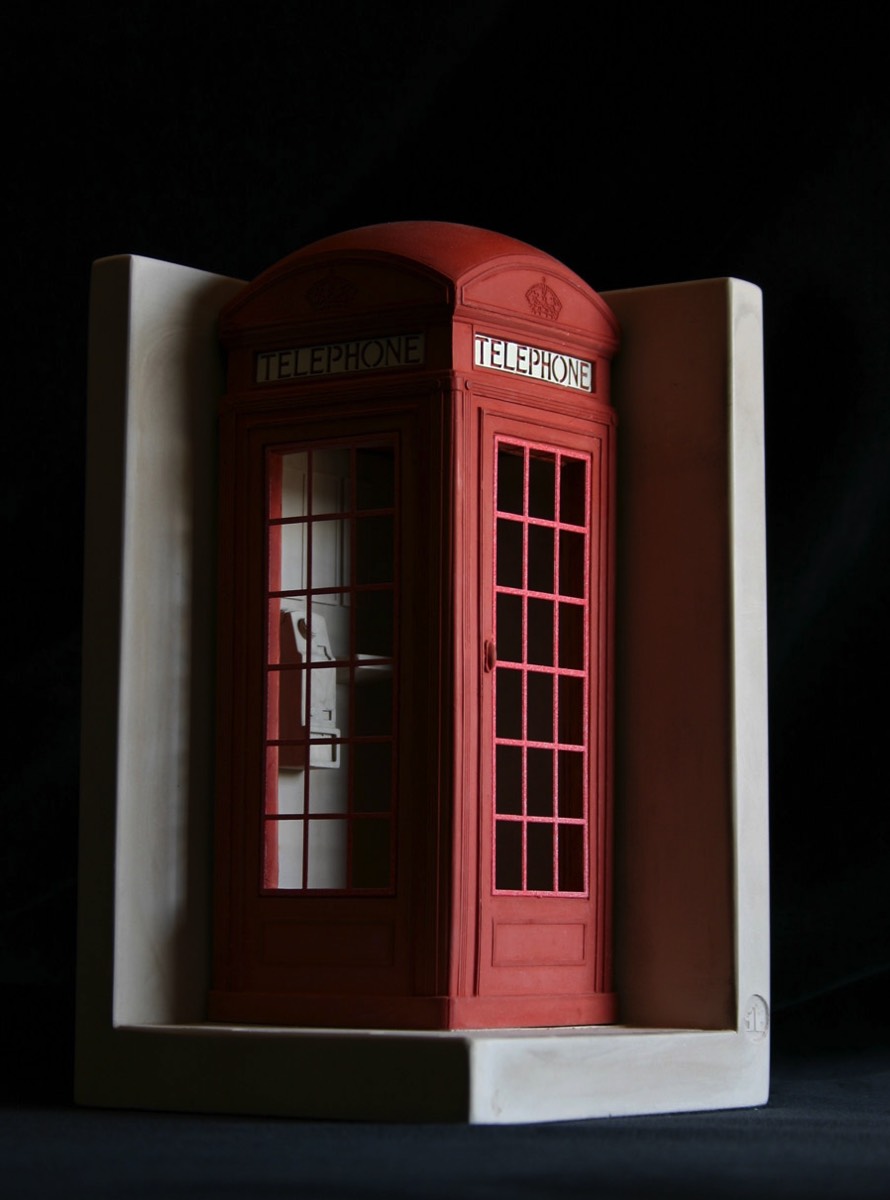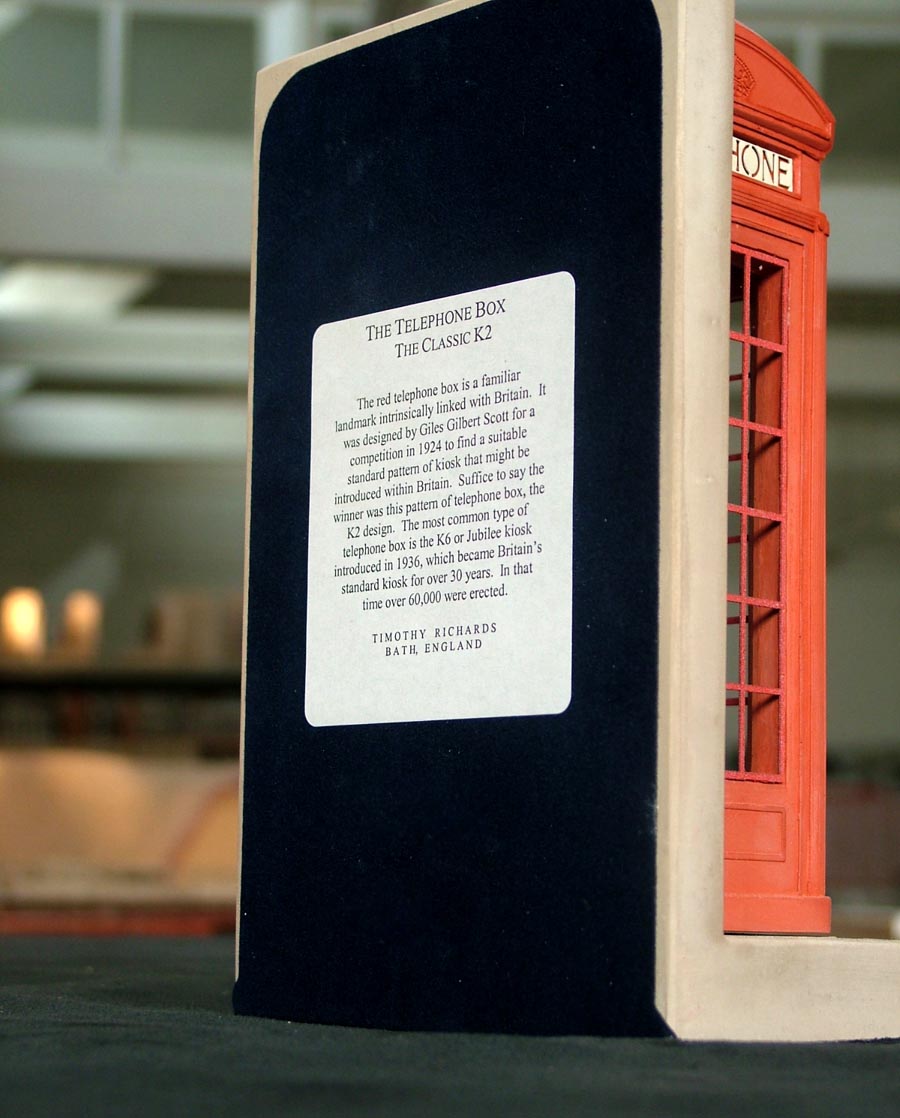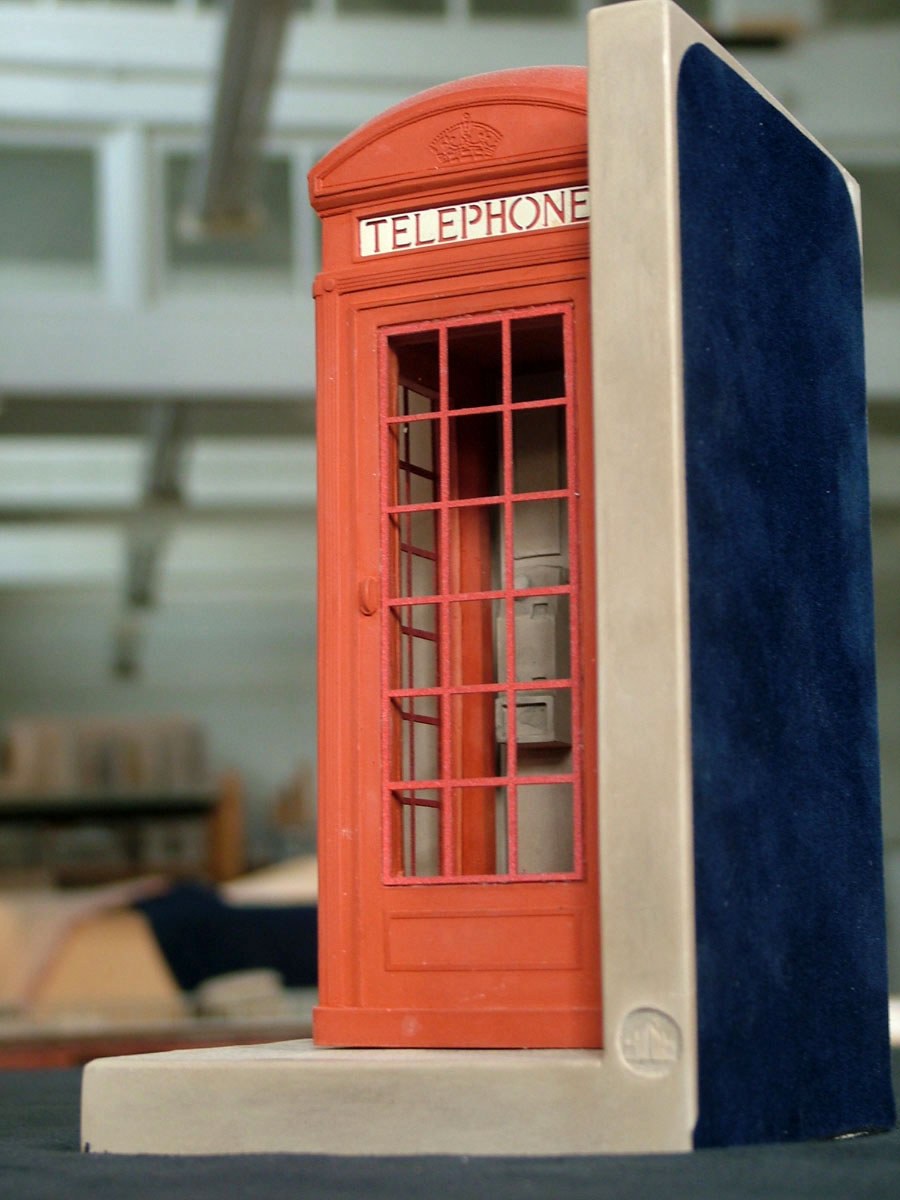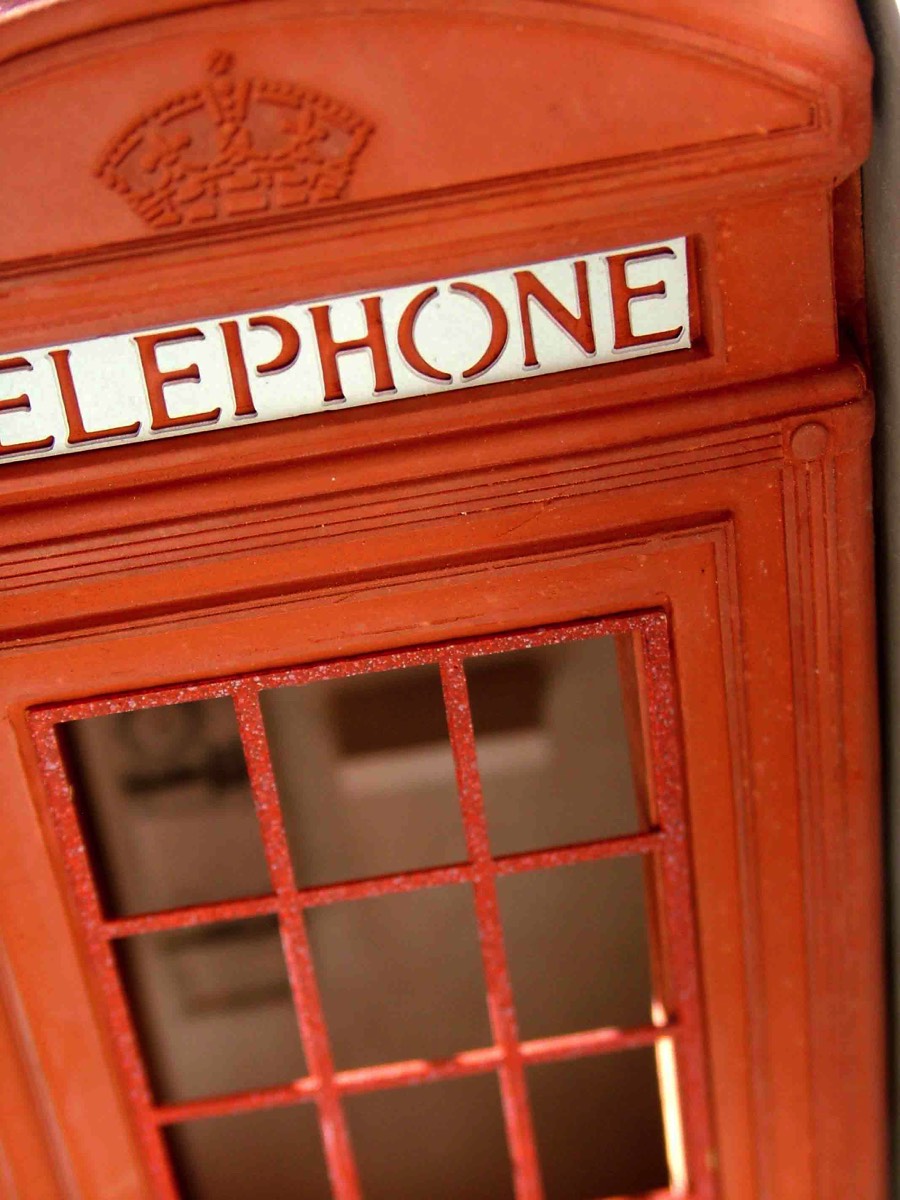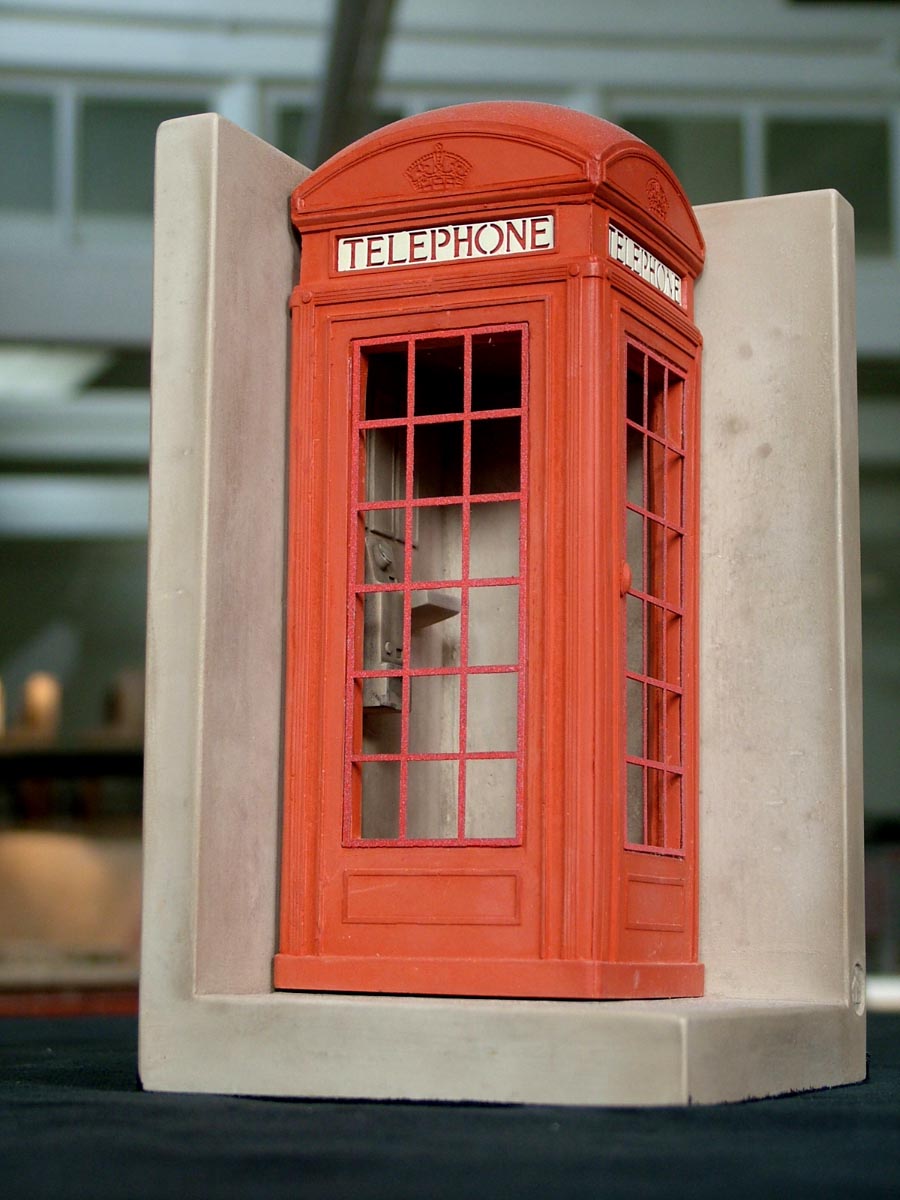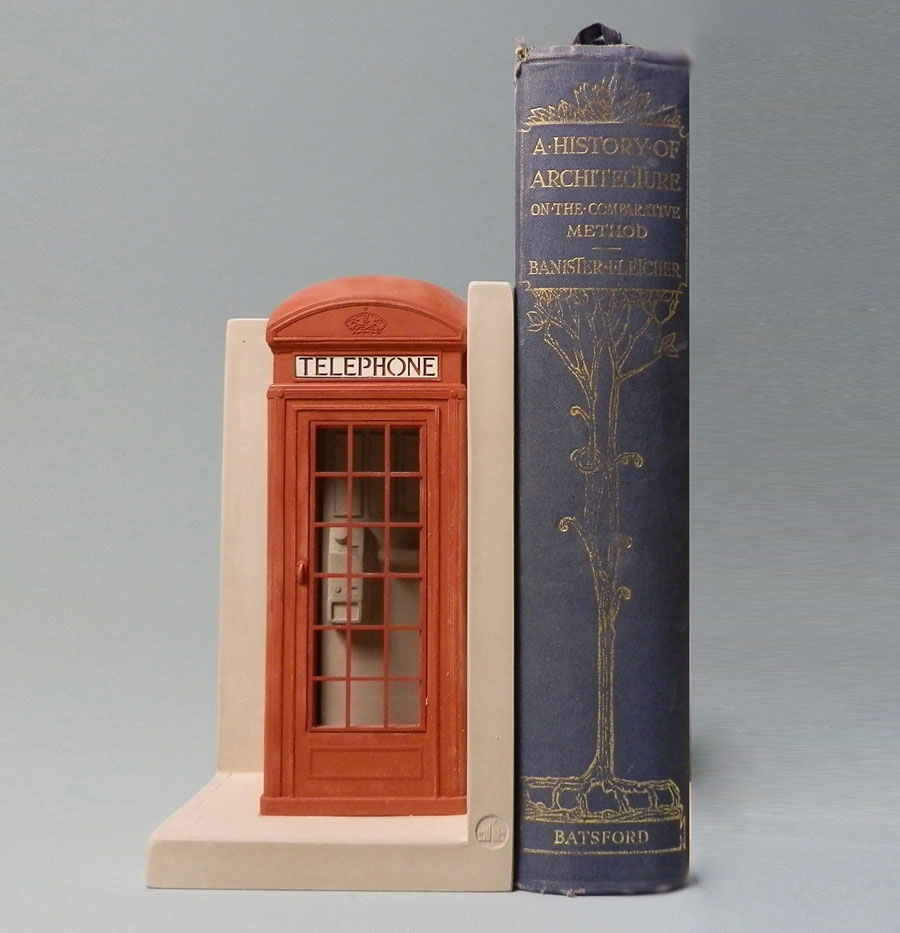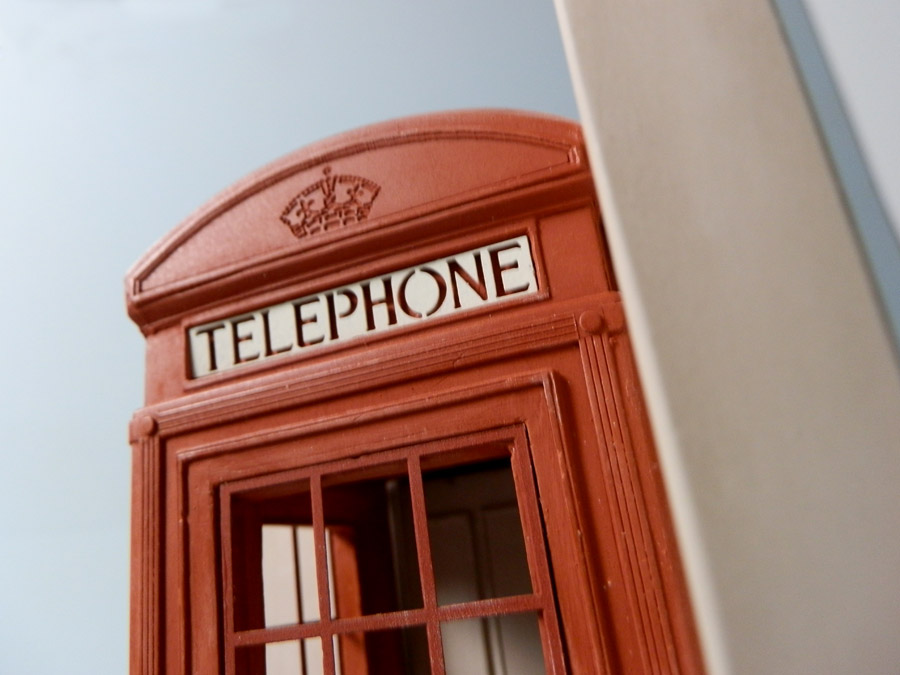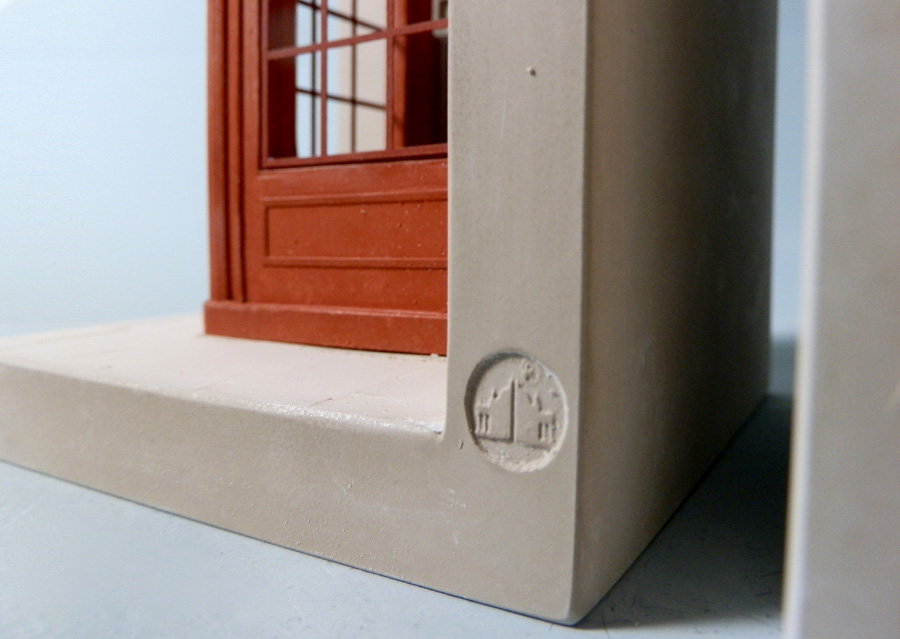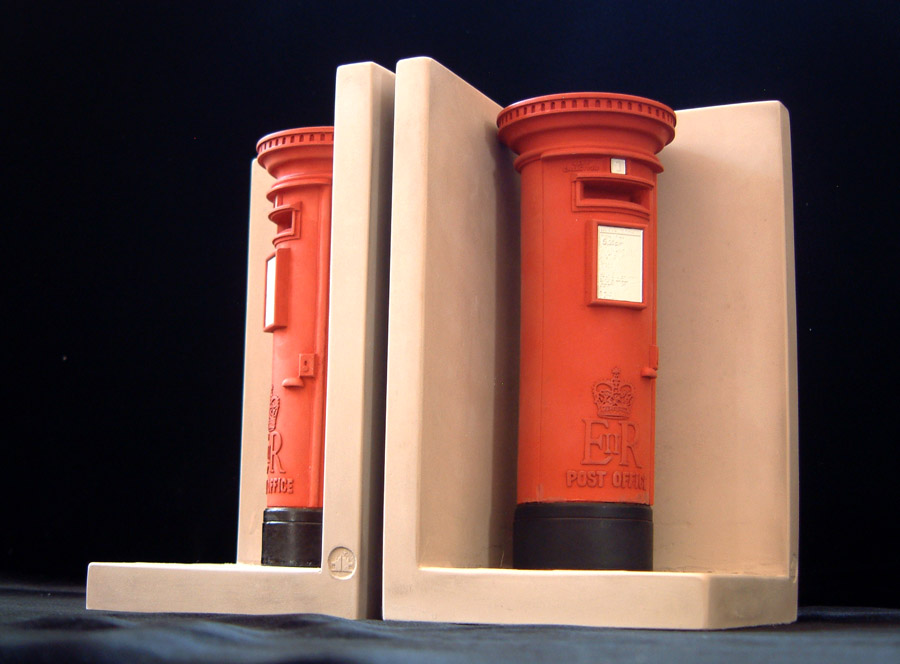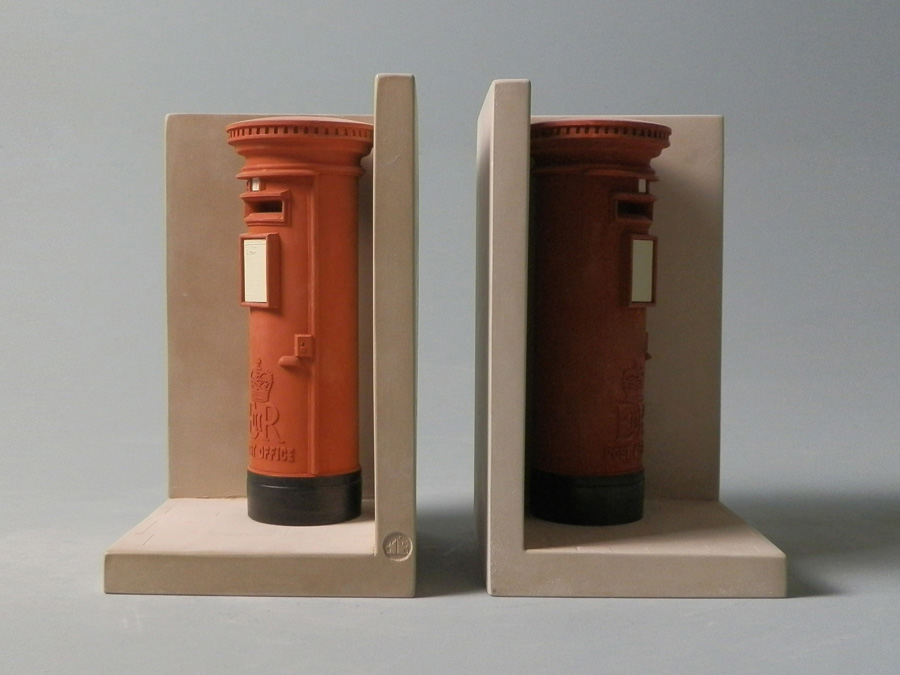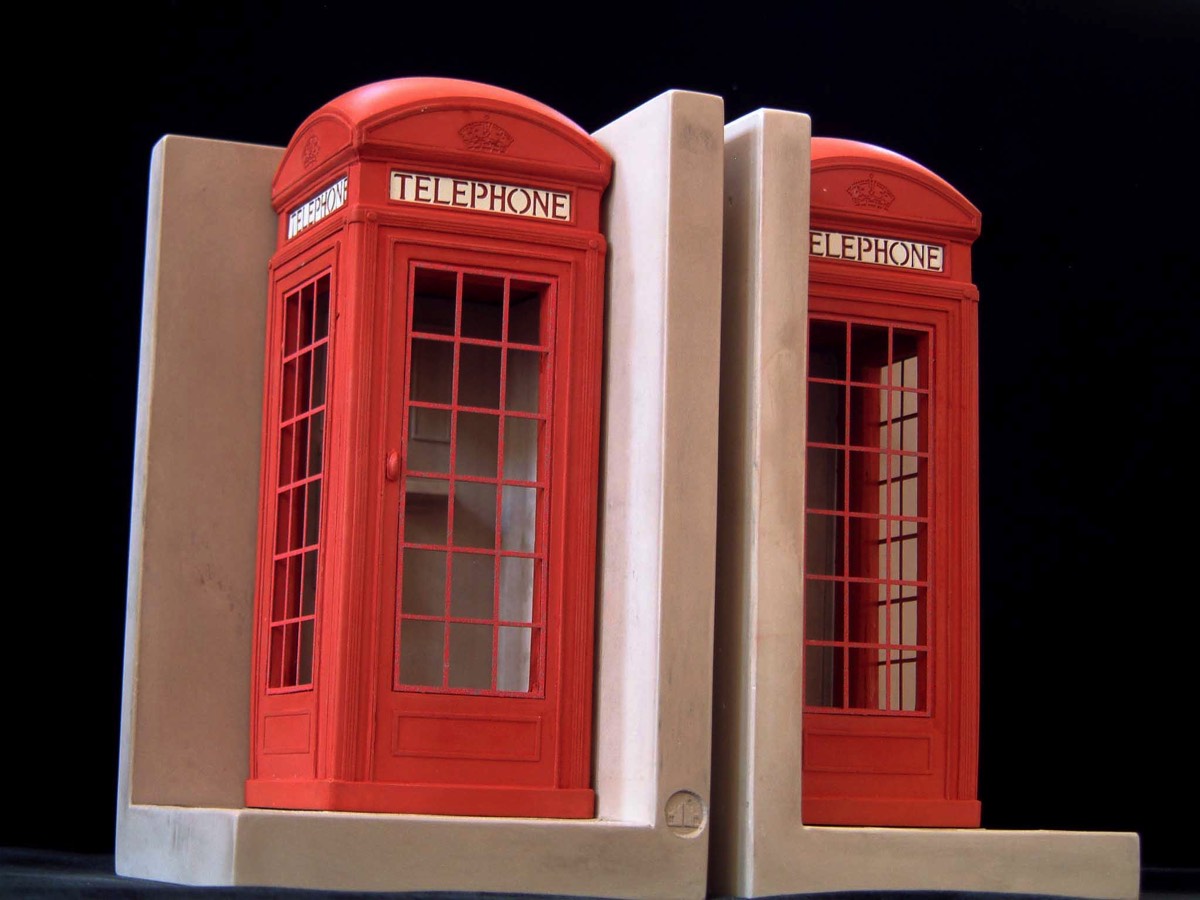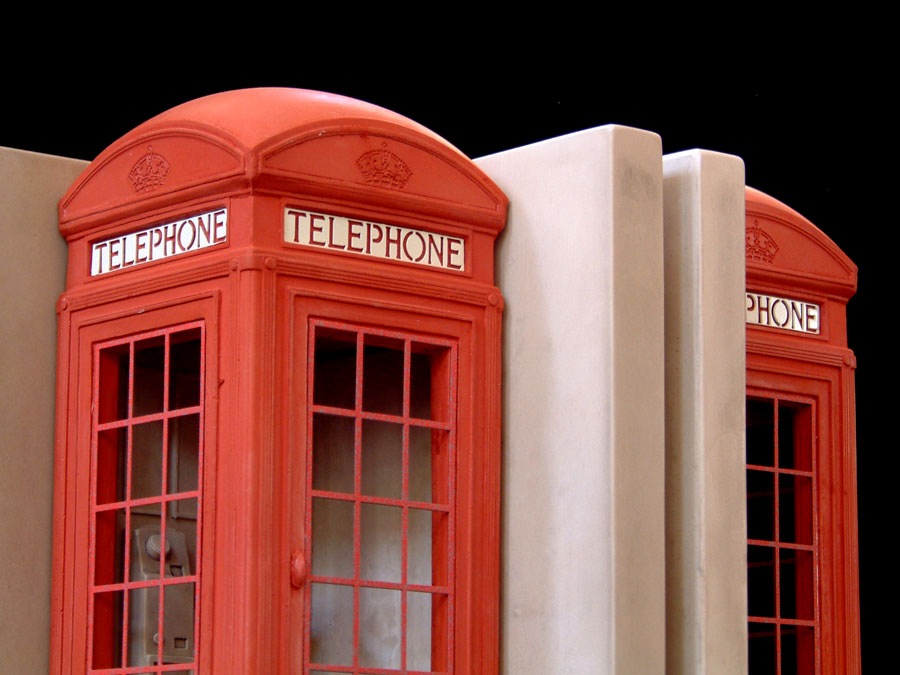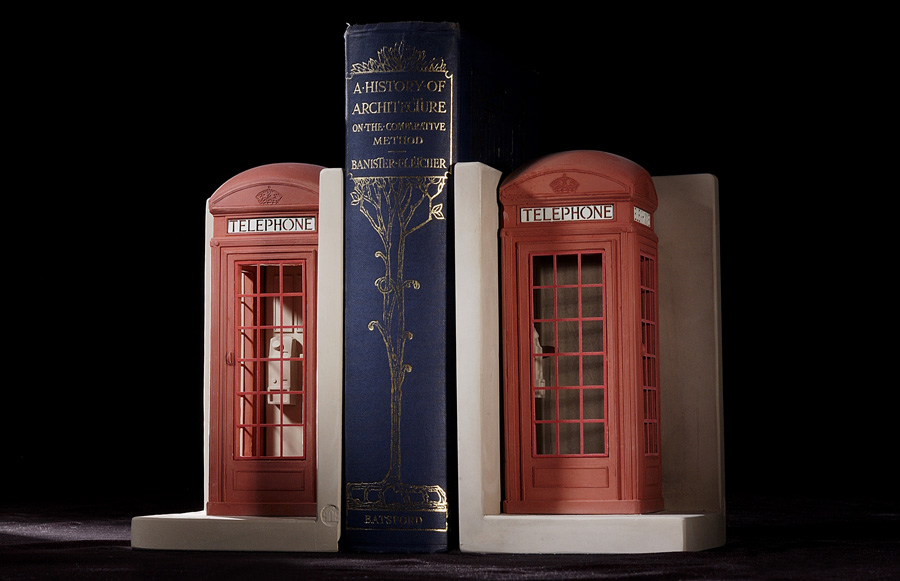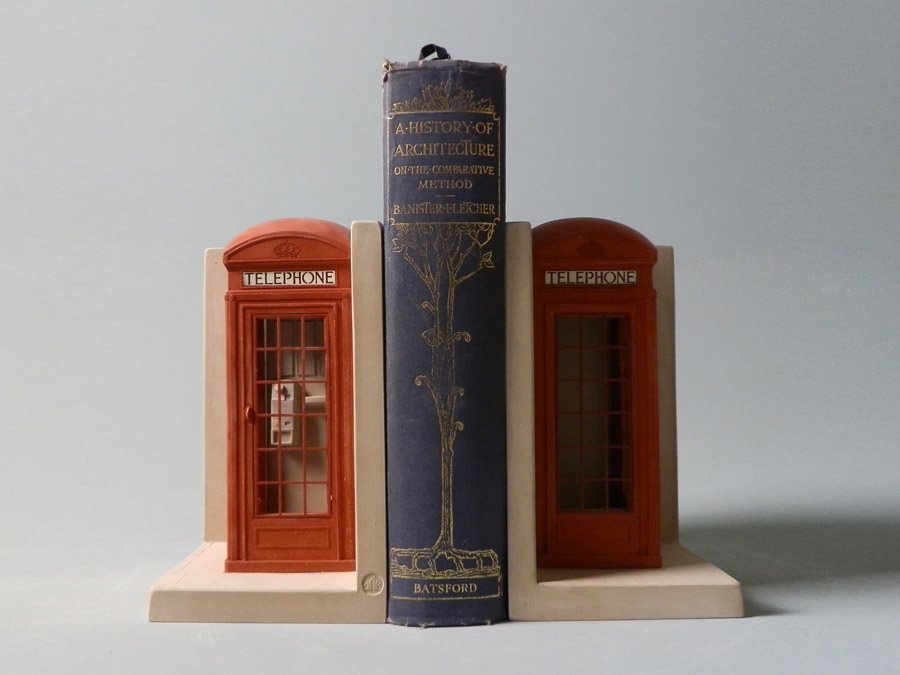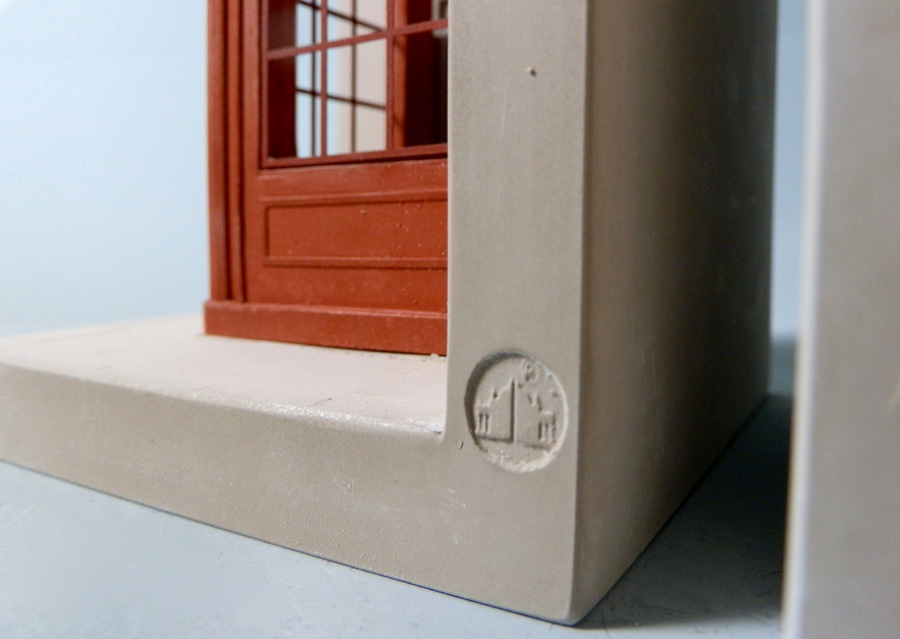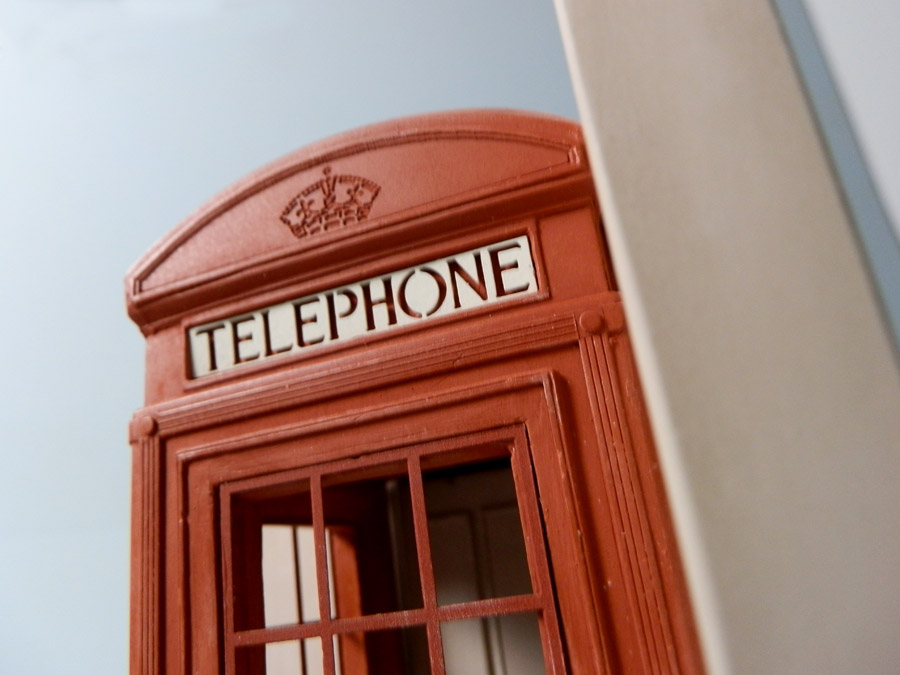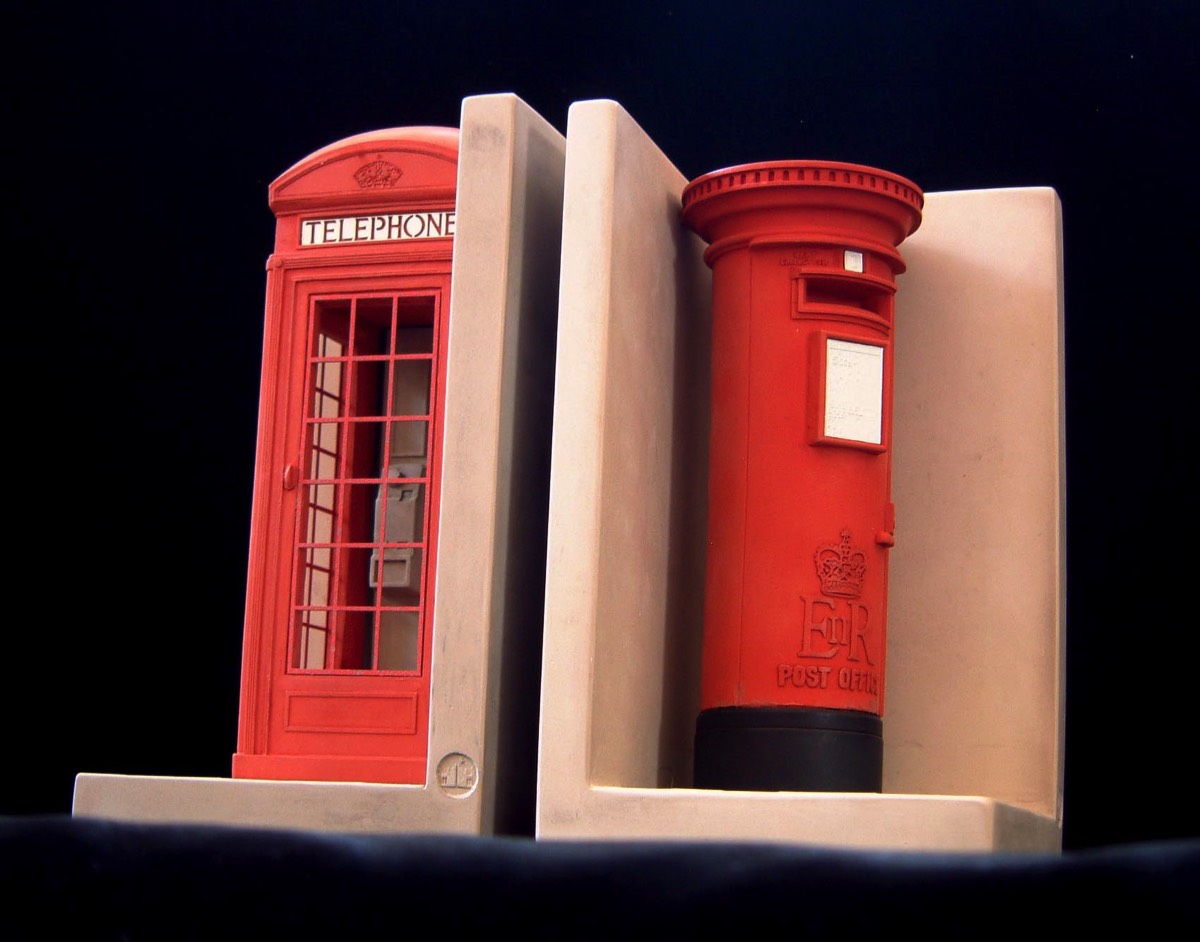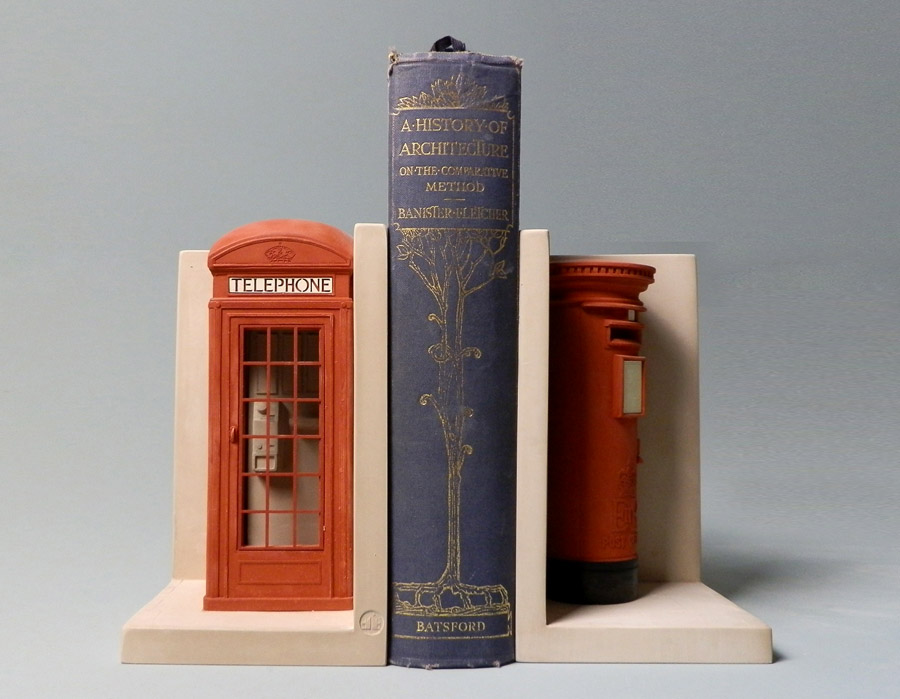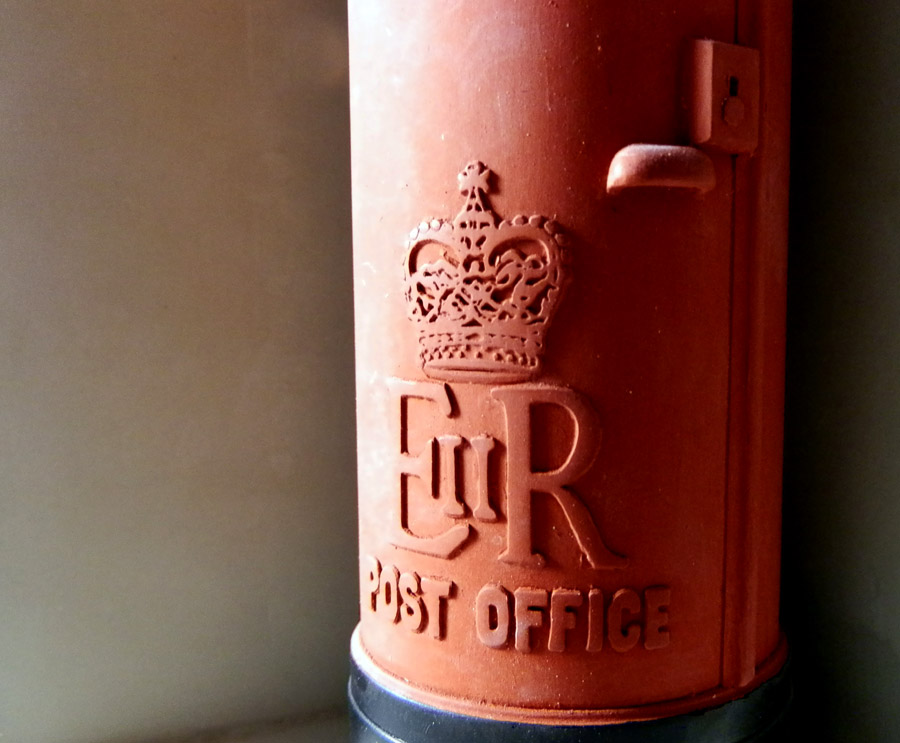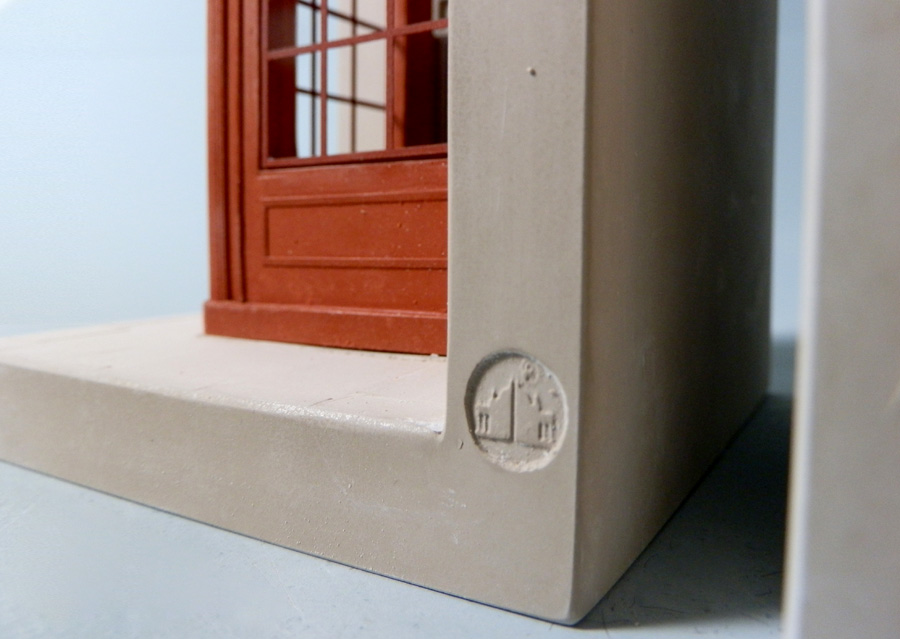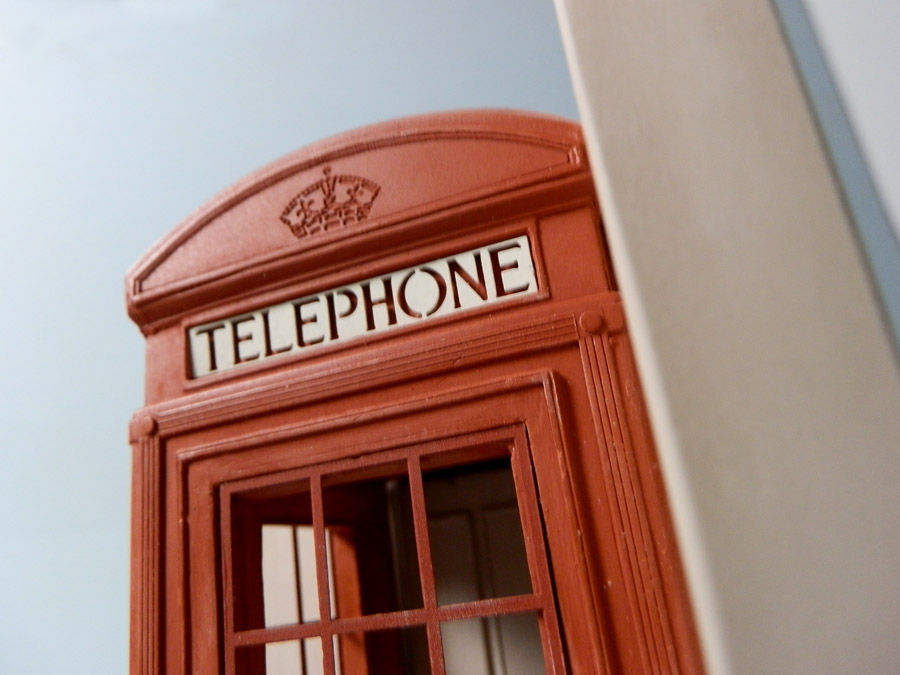
British Telephone Box and Post Box
Click on the image to enlarge.
Dimensions:
More Info
Imperial
H: 4.5 "
W: 7"
D: 4.5"
Metric
H: 114 mm
W: 177.8 mm
D: 228.6 mm
Weight: 1.5kg
Disclaimer:
All dimensions, weight and colouring vary due to the natural materials used and the throughout handmade process.
H: 4.5 "
W: 7"
D: 4.5"
Metric
H: 114 mm
W: 177.8 mm
D: 228.6 mm
Weight: 1.5kg
Disclaimer:
All dimensions, weight and colouring vary due to the natural materials used and the throughout handmade process.
British Post Box
Traditionally made of cast iron and originating during the reign of Queen Victoria.
More Info
The post boxes carry the insignia of the present monarch at the time of installation.
365 design variations have been produced since the first was installed in 1852 in the Channel Islands.
This was at the recommendation of the famous English novelist Anthony Trollope, who was working as a Surveyor’s Clerk for the Post Office at the time.
365 design variations have been produced since the first was installed in 1852 in the Channel Islands.
This was at the recommendation of the famous English novelist Anthony Trollope, who was working as a Surveyor’s Clerk for the Post Office at the time.
Click on the image to enlarge.
Dimensions:
More Info
Imperial
H: 4.5 "
W: 7"
D: 4.5"
Metric
H: 114 mm
W: 177.8 mm
D: 228.6 mm
Weight: 1.7kg
Disclaimer:
All dimensions, weight and colouring vary due to the natural materials used and the throughout handmade process.
H: 4.5 "
W: 7"
D: 4.5"
Metric
H: 114 mm
W: 177.8 mm
D: 228.6 mm
Weight: 1.7kg
Disclaimer:
All dimensions, weight and colouring vary due to the natural materials used and the throughout handmade process.
British Telephone Box
Designed by Giles Gilbert Scott
When – 1924
More Info
The cast iron red telephone box was designed by Giles Gilbert Scott for a competition in 1924 to find a suitable standard pattern of kiosk that might be introduced throughout Britain; this model shows his winning entry of the K2 design.
The most common type of telephone box is the K6 or Jubilee kiosk introduced in 1936. In 30 years 60,000 were erected. The characteristic dome is borrowed from Sir John Soane’s tomb in London St Pancreas churchyard. This shape is technical called Soanian Dome.
The most common type of telephone box is the K6 or Jubilee kiosk introduced in 1936. In 30 years 60,000 were erected. The characteristic dome is borrowed from Sir John Soane’s tomb in London St Pancreas churchyard. This shape is technical called Soanian Dome.
Click on the image to enlarge.
Dimensions:
More Info
Each Bookend
Imperial
H: 4.5 "
W: 7"
D: 4.5"
Metric
H: 114 mm
W: 177.8 mm
D: 228.6 mm
Weight: 1.5kg
Disclaimer:
All dimensions, weight and colouring vary due to the natural materials used and the throughout handmade process.
Imperial
H: 4.5 "
W: 7"
D: 4.5"
Metric
H: 114 mm
W: 177.8 mm
D: 228.6 mm
Weight: 1.5kg
Disclaimer:
All dimensions, weight and colouring vary due to the natural materials used and the throughout handmade process.
Post Box (Set of 2)
Traditionally made of cast iron and originating during the reign of Queen Victoria.
More Info
The post boxes carry the insignia of the present monarch at the time of installation.
365 design variations have been produced since the first was installed in 1852 in the Channel Islands.
This was at the recommendation of the famous English novelist Anthony Trollope, who was working as a Surveyor’s Clerk for the Post Office at the time.
365 design variations have been produced since the first was installed in 1852 in the Channel Islands.
This was at the recommendation of the famous English novelist Anthony Trollope, who was working as a Surveyor’s Clerk for the Post Office at the time.
Click on the image to enlarge.
Dimensions:
More Info
Each Bookend
Imperial
H: 4.5 "
W: 7"
D: 4.5"
Metric
H: 114 mm
W: 177.8 mm
D: 228.6 mm
Disclaimer:
All dimensions, weight and colouring vary due to the natural materials used and the throughout handmade process.
Weight: 1.7kg
Imperial
H: 4.5 "
W: 7"
D: 4.5"
Metric
H: 114 mm
W: 177.8 mm
D: 228.6 mm
Disclaimer:
All dimensions, weight and colouring vary due to the natural materials used and the throughout handmade process.
Weight: 1.7kg
Telephone Box (Set of 2)
Designed by Giles Gilbert Scott
When – 1924
When – 1924
More Info
The cast iron red telephone box was designed by Giles Gilbert Scott for a competition in 1924 to find a suitable standard pattern of kiosk that might be introduced throughout Britain; this model shows his winning entry of the K2 design .
The most common type of telephone box is the K6 or Jubilee kiosk introduced in 1936. In 30 years 60,000 were erected. The characteristic dome is borrowed from Sir John Soane’s tomb in London St Pancreas churchyard. This shape is technical called Soanian Dome.
The most common type of telephone box is the K6 or Jubilee kiosk introduced in 1936. In 30 years 60,000 were erected. The characteristic dome is borrowed from Sir John Soane’s tomb in London St Pancreas churchyard. This shape is technical called Soanian Dome.
Click on the image to enlarge.
Dimensions:
More Info
Telephone Box
Bookend
Imperial
H: 4.5 "
W: 7"
D: 4.5"
Metric
H: 114 mm
W: 177.8 mm
D: 228.6 mm
Weight: 1.7kg
Post Box
Bookend
Imperial
H: 4.5 "
W: 7"
D: 4.5"
Metric
H: 114 mm
W: 177.8 mm
D: 228.6 mm
Weight: 1.5kg
Disclaimer:
All dimensions, weight and colouring vary due to the natural materials used and the throughout handmade process.
Bookend
Imperial
H: 4.5 "
W: 7"
D: 4.5"
Metric
H: 114 mm
W: 177.8 mm
D: 228.6 mm
Weight: 1.7kg
Post Box
Bookend
Imperial
H: 4.5 "
W: 7"
D: 4.5"
Metric
H: 114 mm
W: 177.8 mm
D: 228.6 mm
Weight: 1.5kg
Disclaimer:
All dimensions, weight and colouring vary due to the natural materials used and the throughout handmade process.
Post Box / Telephone Box
(Set of 2)
(Set of 2)
Traditionally made of cast iron and originating during the reign of Queen Victoria.
More Info
The post boxes carry the insignia of the present monarch at the time of installation.
365 design variations have been produced since the first was installed in 1852 in the Channel Islands.
This was at the recommendation of the famous English novelist Anthony Trollope, who was working as a Surveyor’s Clerk for the Post Office at the time.
365 design variations have been produced since the first was installed in 1852 in the Channel Islands.
This was at the recommendation of the famous English novelist Anthony Trollope, who was working as a Surveyor’s Clerk for the Post Office at the time.

British Telephone Box and Post Box
Click on the image to enlarge.
Dimensions:
More Info
Imperial
H: 4.5 "
W: 7"
D: 4.5"
Metric
H: 114 mm
W: 177.8 mm
D: 228.6 mm
Weight: 1.5kg
Disclaimer:
All dimensions, weight and colouring vary due to the natural materials used and the throughout handmade process.
H: 4.5 "
W: 7"
D: 4.5"
Metric
H: 114 mm
W: 177.8 mm
D: 228.6 mm
Weight: 1.5kg
Disclaimer:
All dimensions, weight and colouring vary due to the natural materials used and the throughout handmade process.
British Post Box
Traditionally made of cast iron and originating during the reign of Queen Victoria.
More Info
The post boxes carry the insignia of the present monarch at the time of installation.
365 design variations have been produced since the first was installed in 1852 in the Channel Islands.
This was at the recommendation of the famous English novelist Anthony Trollope, who was working as a Surveyor’s Clerk for the Post Office at the time.
365 design variations have been produced since the first was installed in 1852 in the Channel Islands.
This was at the recommendation of the famous English novelist Anthony Trollope, who was working as a Surveyor’s Clerk for the Post Office at the time.
Click on the image to enlarge.
Dimensions:
More Info
Imperial
H: 4.5 "
W: 7"
D: 4.5"
Metric
H: 114 mm
W: 177.8 mm
D: 228.6 mm
Weight: 1.7kg
Disclaimer:
All dimensions, weight and colouring vary due to the natural materials used and the throughout handmade process.
H: 4.5 "
W: 7"
D: 4.5"
Metric
H: 114 mm
W: 177.8 mm
D: 228.6 mm
Weight: 1.7kg
Disclaimer:
All dimensions, weight and colouring vary due to the natural materials used and the throughout handmade process.
British Telephone Box
Designed by Giles Gilbert Scott
When – 1924
More Info
The cast iron red telephone box was designed by Giles Gilbert Scott for a competition in 1924 to find a suitable standard pattern of kiosk that might be introduced throughout Britain; this model shows his winning entry of the K2 design.
The most common type of telephone box is the K6 or Jubilee kiosk introduced in 1936. In 30 years 60,000 were erected. The characteristic dome is borrowed from Sir John Soane’s tomb in London St Pancreas churchyard. This shape is technical called Soanian Dome.
The most common type of telephone box is the K6 or Jubilee kiosk introduced in 1936. In 30 years 60,000 were erected. The characteristic dome is borrowed from Sir John Soane’s tomb in London St Pancreas churchyard. This shape is technical called Soanian Dome.
Click on the image to enlarge.
Dimensions:
More Info
Each Bookend
Imperial
H: 4.5 "
W: 7"
D: 4.5"
Metric
H: 114 mm
W: 177.8 mm
D: 228.6 mm
Weight: 1.5kg
Disclaimer:
All dimensions, weight and colouring vary due to the natural materials used and the throughout handmade process.
Imperial
H: 4.5 "
W: 7"
D: 4.5"
Metric
H: 114 mm
W: 177.8 mm
D: 228.6 mm
Weight: 1.5kg
Disclaimer:
All dimensions, weight and colouring vary due to the natural materials used and the throughout handmade process.
Post Box (Set of 2)
Traditionally made of cast iron and originating during the reign of Queen Victoria.
More Info
The post boxes carry the insignia of the present monarch at the time of installation.
365 design variations have been produced since the first was installed in 1852 in the Channel Islands.
This was at the recommendation of the famous English novelist Anthony Trollope, who was working as a Surveyor’s Clerk for the Post Office at the time.
365 design variations have been produced since the first was installed in 1852 in the Channel Islands.
This was at the recommendation of the famous English novelist Anthony Trollope, who was working as a Surveyor’s Clerk for the Post Office at the time.
Click on the image to enlarge.
Dimensions:
More Info
Each Bookend
Imperial
H: 4.5 "
W: 7"
D: 4.5"
Metric
H: 114 mm
W: 177.8 mm
D: 228.6 mm
Disclaimer:
All dimensions, weight and colouring vary due to the natural materials used and the throughout handmade process.
Weight: 1.7kg
Imperial
H: 4.5 "
W: 7"
D: 4.5"
Metric
H: 114 mm
W: 177.8 mm
D: 228.6 mm
Disclaimer:
All dimensions, weight and colouring vary due to the natural materials used and the throughout handmade process.
Weight: 1.7kg
Telephone Box (Set of 2)
Designed by Giles Gilbert Scott
When – 1924
When – 1924
More Info
The cast iron red telephone box was designed by Giles Gilbert Scott for a competition in 1924 to find a suitable standard pattern of kiosk that might be introduced throughout Britain; this model shows his winning entry of the K2 design .
The most common type of telephone box is the K6 or Jubilee kiosk introduced in 1936. In 30 years 60,000 were erected. The characteristic dome is borrowed from Sir John Soane’s tomb in London St Pancreas churchyard. This shape is technical called Soanian Dome.
The most common type of telephone box is the K6 or Jubilee kiosk introduced in 1936. In 30 years 60,000 were erected. The characteristic dome is borrowed from Sir John Soane’s tomb in London St Pancreas churchyard. This shape is technical called Soanian Dome.
Click on the image to enlarge.
Dimensions:
More Info
Telephone Box
Bookend
Imperial
H: 4.5 "
W: 7"
D: 4.5"
Metric
H: 114 mm
W: 177.8 mm
D: 228.6 mm
Weight: 1.7kg
Post Box
Bookend
Imperial
H: 4.5 "
W: 7"
D: 4.5"
Metric
H: 114 mm
W: 177.8 mm
D: 228.6 mm
Weight: 1.5kg
Disclaimer:
All dimensions, weight and colouring vary due to the natural materials used and the throughout handmade process.
Bookend
Imperial
H: 4.5 "
W: 7"
D: 4.5"
Metric
H: 114 mm
W: 177.8 mm
D: 228.6 mm
Weight: 1.7kg
Post Box
Bookend
Imperial
H: 4.5 "
W: 7"
D: 4.5"
Metric
H: 114 mm
W: 177.8 mm
D: 228.6 mm
Weight: 1.5kg
Disclaimer:
All dimensions, weight and colouring vary due to the natural materials used and the throughout handmade process.
Post Box / Telephone Box
(Set of 2)
(Set of 2)
Traditionally made of cast iron and originating during the reign of Queen Victoria.
More Info
The post boxes carry the insignia of the present monarch at the time of installation.
365 design variations have been produced since the first was installed in 1852 in the Channel Islands.
This was at the recommendation of the famous English novelist Anthony Trollope, who was working as a Surveyor’s Clerk for the Post Office at the time.
365 design variations have been produced since the first was installed in 1852 in the Channel Islands.
This was at the recommendation of the famous English novelist Anthony Trollope, who was working as a Surveyor’s Clerk for the Post Office at the time.
